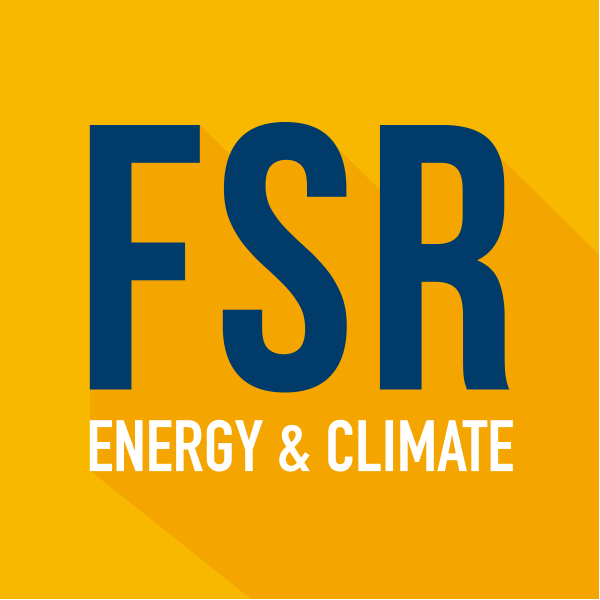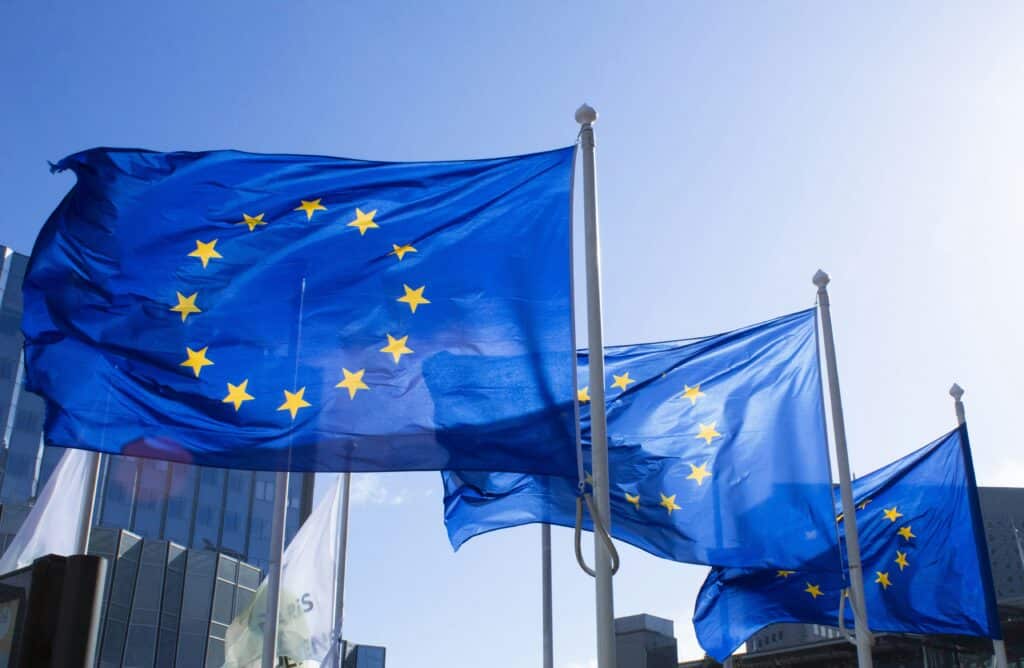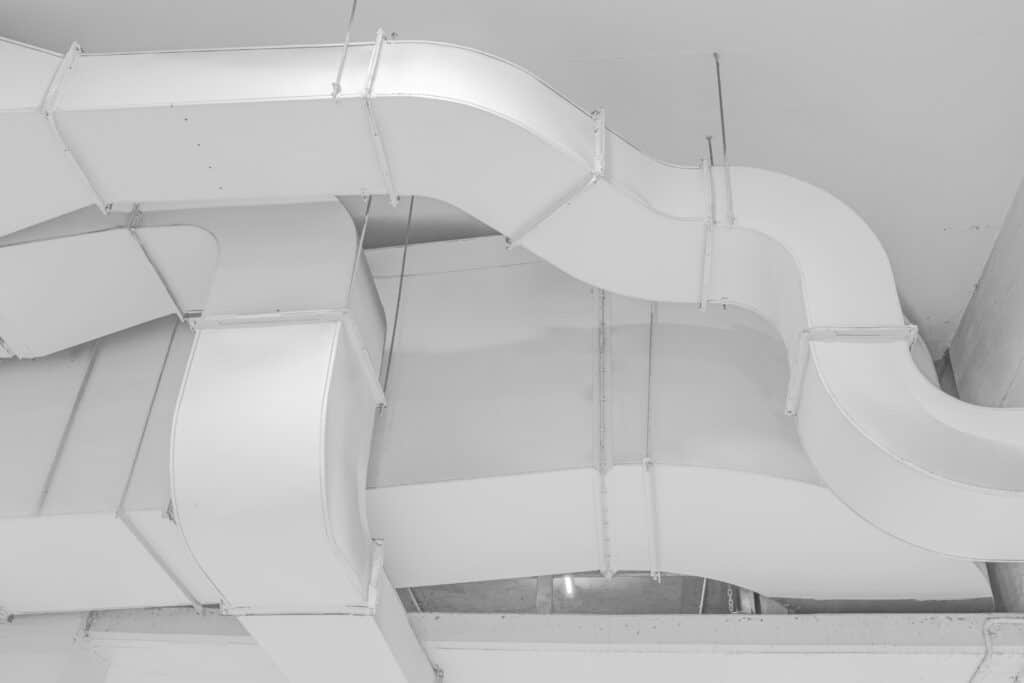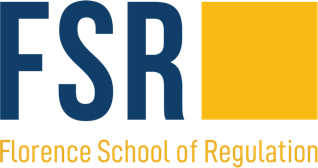State aid and industrial decarbonisation
What is State aid control in the EU legal order? What role does State aid play in industrial decarbonisation? This article covers key EU rules, frameworks, and conditions for compatible public support.
In this article, we focus on State aid in favour of industrial decarbonisation and explore the topic through five key questions: What is State aid control in the EU legal order? Why does State aid play an important role in the pursuit of industrial decarbonisation? Which legal framework applies to State intervention in this field? What conditions ensure compatibility of State aid for industrial decarbonisation with the internal market? What is the current state of play on State aid measures in favour of industrial decarbonisation?
What is State aid control in the EU legal order?
The notion of ‘State aid’ refers to any measure that fulfils the following (cumulative) conditions: the beneficiary is an undertaking, the aid is granted by the State or through State resources, it confers a selective advantage to its beneficiary, has a potential effect on trade between Member States, and threatens to distort competition. In the EU legal order, Article 107, paragraph 1 of the Treaty on the Functioning of the European Union (TFEU) establishes a strict prohibition on ‘State aid’ in order to preserve fair competition and a level playing field in the internal market. However, paragraphs 2 and 3 of the article provide a list of possible justifications for State aid and paragraph 3, letter c) in particular, targets cases where the aid is aimed “to facilitate the development of certain economic activities or of certain economic areas, where such aid does not adversely affect trading conditions to an extent contrary to the common interest”, subject to the Commission’s compatibility assessment. Article 108, paragraph 3 of the TFEU furthermore requires Member States to notify “any plans to grant or alter aid”, whilst abstaining from granting aid until they have obtained the Commission’s green-light (‘stand-still’ obligation).[1]
Why does State aid play an important role in the pursuit of industrial decarbonisation?
State aid can serve as an effective tool to contribute to the EU’s environmental objectives, notably by supporting the efforts of undertakings active in the industrial sector to decarbonise their activities. According to the Commission’s 2023 ‘State aid Scoreboard’, environmental and energy aid constitutes the main policy focus of Member States in terms of (non-crisis) State aid expenditure (51% over the last six years). In its 2020 Communication on a New Industrial Strategy for Europe, the Commission stressed the importance of supporting the industry towards reaching climate neutrality, in line with the objectives of the European Green Deal for 2050. In 2022, the industrial sector accounted for over 20% of total greenhouse gas (GHG) emissions according to the European Environment Agency. Industrial processes, in particular in energy-intensive sectors such as steel, cement, chemicals, glass, pulp and paper, generate significant GHG emissions, as they use fossil fuels both as a fuel and feedstock. In those sectors, reducing emissions requires significant investments by undertakings, often with limited or no perspective of increased profitability in return, whilst market-based mechanisms, such as the EU Emission Trading System (EU-ETS), may not provide companies with sufficient incentive to internalise the costs of reducing their GHG emissions. According to the Draghi Report the cost of decarbonisation for the largest energy-intensive industries (EII), such as chemicals, basic metals, non-metallic minerals and paper, is estimated at around EUR 500 billion over the next 15 years. The Report also stresses that EIIs (and even more so ‘hard-to-abate sectors’) need public support to reach their decarbonisation targets. Where markets alone cannot bring about the necessary changes in this field there may, therefore, be a need for State aid to support decarbonisation. The use of State aid can kill two birds with one stone: mitigating climate change on the one hand and reducing dependencies on fossil fuel imports on the other hand, an important aspect in a context marked by the energy crisis that followed the invasion of Ukraine.
Which legal framework applies to State intervention in the field of industrial decarbonisation?
In January 2019, the Commission launched an extensive review of existing State aid rules (so-called ‘fitness-check’) to assess their contribution to achieving the EU 2020 policy objectives and to ensure that they were still ‘fit for purpose’ to meet future objectives in line with the EU’s new priorities. The evaluation concluded in October 2020 that some rules required adaptation, in particular in light of the adoption of the Green Deal.[2] Accordingly, the Commission revised the legal framework applicable to aid in favour of decarbonisation projects, introducing specific rules which are contained in two instruments and one temporary framework.
The first instrument is represented by the Guidelines on State aid. In February 2022, the Commission adopted the Guidelines on State aid for climate, environmental protection and energy (CEEAG) to replace its previous guidelines for environmental protection and energy aid (EEAG), which expired on 31 December 2021. The CEEAG aim at providing Member States with guidance on the Commission’s ‘compatibility assessment’ of aid measures that are subject to its prior approval. Section 4.1 of the CEEAG, in particular, is now dedicated to decarbonisation (it applies to all aid measures for “the reduction and removal of greenhouse gas emissions”) and endeavours to cover all technologies that can contribute to this objective. The Commission explains that “[t]o facilitate to the greatest possible extent the achievement of the Union’s climate targets, the scope of the proposed Guidelines is extended to all technologies that reduce greenhouse gases and energy efficiency. This section of the Guidelines deliberately avoids mentioning specific technologies as the intention is to enable all technologies and approaches that can contribute to decarbonisation objectives, so as to ensure the Guidelines are as “future proof as possible”.[3] The CEEAG also seek to create certain flexibilities: for example, by removing the obligation to individually notify large projects that are supported within an approved scheme and by introducing new aid instruments such as Carbon Contracts for Difference (CCfDs).
In parallel, the Commission conducted a partial revision of the second instrument, Regulation (EU) No 651/2014 – known as the General Block Exemption Regulation (GBER) – which entered into force on the 1st of July 2023. The GBER, which was adopted in 2014 in accordance with the provisions of Article 109 TFEU,[4] is a cornerstone of the Commission’s ‘State aid modernisation’ plan that was launched in 2012. It aims to reduce the administrative burden linked to systematic notification procedures: the regulation sets out ‘compatibility conditions’, which, when they are met, allow the Commission to presume that the aid measure is compatible with the internal market, without subjecting it to an in-depth assessment in the context of a notification procedure. The maximum amount for an individual award of aid “per undertaking or per project” (so-called ‘notification threshold’) is one of such conditions.[5] The targeted revision of the regulation aims to “ensure consistency between the different sets of rules targeting the same objectives” and to “take into account changes in the market and in view of the European Green Deal and the European Climate Law objectives”.
In line with the adoption of the CEEAG, the amended regulation extends possibilities for aid in the area of environmental protection and energy, with Article 36 now explicitly targeting decarbonisation and innovative technologies such as those relying on renewable or low-carbon hydrogen or investments in CO2 capture and transport (CCS). The targeted revision also provides Member States with significant headroom by doubling the notification threshold for environmental protection aid (the general threshold is now fixed at EUR 30 million “per undertaking or per project” as opposed to EUR 15 million previously). However, though seemingly more flexible, the revised GBER also imposes new significant constraints on decarbonisation aid, such as a strict exclusion of aid in favour of new investments in equipment, machinery and industrial production facilities using fossil fuels (including natural gas), which dismisses any support towards ‘hybrid solutions’ that may rely, at least in part (and even in a very residual manner) on the use of fossil fuels or projects using natural gas as a ‘transition fuel’.
Following the invasion of Ukraine by Russia, the Commission adopted in March 2022 a Temporary Crisis Framework (TCF), which was amended for the first time in July 2022 in line with the REPowerEU Plan. The amendment extended the scope of the TCF to measures accelerating the rollout of renewable energy (section 2.5) and to measures facilitating the decarbonisation of industrial processes (section 2.6) “to accelerate the diversification of energy supplies” by “supporting investments to phase out fossil fuels”. However, the eligible investments under section 2.6 of the TCF (now the Temporary Crisis and Transition Framework or TCTF) were limited to (i) electrification, (ii) energy efficiency measures, and (iii) technologies using renewable and electricity-based hydrogen or renewable hydrogen-derived fuels. The framework furthermore set out very demanding eligibility conditions from an environmental standpoint. The TCTF was effectively repealed on 25 June 2025 with the adoption of the Clean Industrial Deal State Aid (CISAF).
The CISAF was initially announced by the Commission in February 2025, in its communication on the Clean Industrial Deal as part of its plans to further simplify State aid rules (in particular in the field of decarbonisation). The CISAF introduces simplified compatibility conditions in the field of industrial decarbonisation and should be regarded as “complementary and additional to the existing State aid rules, which remain in force, most notably the CEEAG (…) or the General Block Exemption Regulation” (point 11 of the CISAF). The CISAF provides Member States with much more flexibility to design their aid schemes as compared to the TCTF’s closed check-list approach. It also covers a much broader scope of aid measures than the previous framework (e.g., CCS/CCU, projects relying on natural gas, ‘greenfield’ investments, etc.). However, it only allows Member States to grant investment aid (albeit much larger amounts than those authorised under the GBER). Thus, more sophisticated measures involving operating aid or certain specific aid instruments such as CCfDs, feed-in premia and tradable certificates must be assessed under the CEEAG (footnote 75). The main advantage of the CISAF lies in the fact that it contains a series of safe harbour provisions, aimed at streamlining notification procedures by allowing the Commission to presume that certain compatibility conditions are met if Member States decide to adhere to these provisions. The text applies for five years, until 31 December 2030.
Finally, it is also worth mentioning the Important Projects of Common European Interest (IPCEIs). IPCEIs enable Member States (at least four) to come together to support integrated projects aimed at reinforcing certain value chains in strategic sectors, including those that contribute towards a decarbonised economy. The IPCEI instrument is aimed at supporting cutting-edge innovation projects (at their RD&I and first industrial deployment stages but excluding mass production and sales), as well as large infrastructure projects. For example, the Commission has already approved four IPCEIs in the hydrogen value chain: the second hydrogen IPCEI (‘Hy2Use’), in particular, aims to facilitate the integration of hydrogen for use in industrial processes in certain hard-to-abate sectors and thereby reduce the use of fossil fuels, in particular natural gas.
What conditions ensure the compatibility of State aid for industrial decarbonisation with the internal market?
Following case-law (C-594/18 Austria v. Commission – Hinkley Point), in order to be compatible with the internal market under Article 107, paragraph 3, letter c) of the TFEU, State aid measures must meet so-called ‘compatibility conditions’ that aim at ensuring that the aid facilitates the development of an economic activity (positive condition), whilst not unduly affecting trading conditions to an extent contrary to the common interest (negative condition). The compatibility conditions allow for an in-depth assessment of whether the aid measure has an incentive effect, is necessary, appropriate, proportionate and transparent, and has a limited impact on trade and competition. Given that the understanding of these compatibility conditions may vary under the CEEAG, the GBER and the CISAF, this section focuses on their interpretation solely in the context of the CEEAG.
As mentioned above, the compatibility conditions applicable to State aid in favour of industrial decarbonisation are set out in section 4.1 of the guidelines. The Commission also provides additional guidance on these conditions in its supplementary information sheets used in the context of notification procedures. These compatibility conditions are the following:
- Contribution to the development of an economic activity in accordance with Union policies and objectives: aid in favour of industrial decarbonisation increases demand for innovative ‘green technologies’ (e.g., based on renewable/low-carbon hydrogen), fosters the development of ‘green products’ originating from a decarbonised production process (e.g., green steel) and, furthermore, enables industrial companies to carry out their activity in a more sustainable way.
- Incentive effect: in a nutshell, point 26 of the CEEAG explains that “an incentive effect occurs when the aid induces the beneficiary to change its behaviour, to engage in additional economic activity or in more environmentally friendly economic activity, which it would not carry out without the aid or would carry out in a restricted or different manner”. Verifying this condition entails identifying and quantifying a ‘factual scenario’ (with the aid) and a ‘counterfactual scenario’ (in the absence of aid). In addition, Member States must showcase that: 1) the beneficiary has submitted an aid application to the national authorities before starting works on the project/the activity; 2) the aid does not cover the costs of an activity that the beneficiary would anyhow have carried out and that it does not either compensate “normal business risks”; and, finally, 3) the aid enables the beneficiary to go beyond applicable Union standards.
- Necessity of aid: contrary to the other aid measures covered by the guidelines, the CEEAG do not require Member States to identify market failures related to environmental protection for measures intended at reducing GHG emissions; Member State must, nevertheless, justify that “aid is needed for the proposed activities” to demonstrate (also on the basis of the ‘counterfactual scenario’) that said-activities would not be carried out without the aid, taking into account policy measures that are already in place at national and European level (such as the EU-ETS).
- Appropriateness: the Commission assumes that State aid, irrespective of the aid instruments used, is appropriate to support the achievement of decarbonisation goals. Regarding CCfDs, the CEEAG note that “carbon contracts for difference may be a useful tool for bringing to market breakthrough technologies that may be necessary to achieve industrial decarbonisation” (CEEAG, footnote 69; see, for example, the Commission’s decision on the German “Climate Protection Contracts” scheme).
- Proportionality: in order to ensure proportionality of aid granted under section 4.1 and reduce risks of overcompensation and market distortions, aid must in principle be granted by way of an open, clear, transparent and non-discriminatory competitive bidding procedure that is open to all technologies and projects in competition (although a more limited eligibility can be accepted in certain cases: see, for example, the Commission decision on a Swedish scheme for State aid for biogenic CCS) and properly designed to avoid risks of strategic-bidding. Furthermore, in order to ensure that the aid supports the most cost-effective investments in terms of decarbonisation, 70% of the weighting of the selection criteria must be based on the amount of aid required per unit of environmental protection (e.g., €/tCO2 abated).
In certain cases, the CEEAG provide derogations to the rule that aid must be granted through a competitive bidding process. An exception exists, for example, for projects that emerge from a selection process intended at identifying candidates for an IPCEI, so-called ‘passerelle cases’ (see, for example, a French aid measure in favour of ArcelorMittal to support the decarbonisation of its steel production in Dunkirk), or for so-called ‘demonstration projects’ (see, for example, a Swedish measure aimed at the decarbonisation of steel production, project ‘Stegra’, formerly known as H2 Green Steel). For such projects, the proportionality of aid is guaranteed through a comprehensive analysis of the ‘funding gap’ of the project, to ensure that the aid amount does not go beyond the net-additional costs incurred by the company for carrying out its environmentally friendly project and, in certain cases, additional safeguards (e.g., claw-back mechanisms).
Finally, proportionality also touches on cumulation of State aid, with the CEEAG stating that when different aid measures are granted in relation to the same eligible costs, Member States must ensure that this situation “does not lead to overcompensation or exceed the maximum aid amount allowed under these guidelines” (CEEAG, point 56).
- Transparency: transparency conditions have been enhanced in the CEEAG with a requirement to carry out a prior consultation of stakeholders on State aid schemes in favour of decarbonisation to ensure that they can participate in the design of the measure. Other general monitoring and transparency requirements continue to apply (annual reports, publication in the “Transparency Award Module”, etc.).
- Avoidance of undue negative effects on competition and trade: When checking this condition for decarbonisation measures and carrying out its ‘balancing exercise’ – to ensure that any negative effects on competition and trade are outweighed by the positive effects of the measure – the Commission pays attention to several conditions such as: the fact that the aid does not merely displace GHG emissions from one sector to another (through an increase of indirect emissions) and that it does in fact deliver overall GHG emission reductions (CEEAG, point 116); that it reduces the emissions directly resulting for the industrial activity (CEEAG, point 115); that is does not displace investments into cleaner alternatives already available on the market (CEEAG, point 127); that it does not encourage new investments in industrial production processes using the most polluting fossil fuels (CEEAG, point 128); that it complies with the “do not significant harm” principle (CEEAG, point 134), and so on.
What is the current state of play on State aid measures in favour of industrial decarbonisation?
According to the Commission’s last Report on Competition Policy for 2023, the overall amount of aid approved both under the CEEAG and the TCTF to decarbonise the production processes of large industrial greenhouse gas emitters, primarily in the steel sector but also in other energy-intensive sectors, was estimated at approximately EUR 9 billion. More recently, the first Competition State Aid Brief of 2025 indicates that, focusing only on the sections of the TCTF aimed at fostering the transition to a net-zero economy (i.e., not limited to decarbonisation but including also measures aimed at the deployment of renewables and new clean-tech manufacturing capacities), the Commission approved 35 national measures between March 2023 and June 2024 with a total budget of EUR 47.25 billion.
Nearly three years after the adoption the CEEAG, the Commission has approved nearly ten large schemes on the basis of its guidelines: two Danish schemes to support the roll-out of CCS technologies (case 1, case 2), an Austrian scheme in favour of “transformative processes”, a German scheme in favour of “Climate Protection contracts”, a Swedish ‘reversed auction’ scheme for biogenic CCS, a modification of a Dutch scheme aimed at reducing GHG emissions, two Slovakian schemes for the decarbonisation of industry, and more recently a French scheme (decision not yet public). It has also approved several cases of individual aid, in particular for so-called ‘passerelle’ files.[6]
Do you want to know more?
If you want to know more about this topic, you may contact the FSR legal experts. Please, write your message to chiara.canestrini@eui.eu.
This Cover the Basics benefited from the contribution of Alix Mengin and Nicolò Rossetto.
[1] The notification procedure is described in more detail in Council Regulation (EU) 2015/1589 laying down detailed rules for the application of Article 108 TFEU (so-called ‘Procedural Regulation’).
[2] The list of key actions of the Green Deal also specifically included a revision of the relevant State aid rules (see Annex to the Communication from the Commission to the European Parliament, the European Council, the Council, the European Economic and Social Committee and the Committee of the Regions – The European Green Deal (COM(2019) 640 final).
[3] Although the guidelines do, in fact, expressly exclude State aid for nuclear energy, thereby de facto excluding decarbonisation solutions based on nuclear technology, such as small modular reactors (SMR) and advanced modular reactors (AMR). As a result, nuclear energy and investments in nuclear plants are subject to the direct application of the TFEU. However, the recently adopted CISAF covers part of the nuclear value chain as it concerns aid possibilities for the development of new manufacturing capacities in the field of clean technologies.
[4] Article 109 TFEU provides that “The Council, on a proposal from the Commission and after consulting the European Parliament, may make any appropriate regulations for the application of Articles 107 and 108 and may in particular determine the conditions in which Article 108(3) shall apply and the categories of aid exempted from this procedure”. Council Regulation No 733/2013 enables the Commission to adopt the GBER for certain categories of aid.
[5] On the contrary, measures that do not meet the GBER’s compatibility criteria (for example, because of the amount of aid envisaged or the characteristics of the project) must be notified to the Commission and follow the principles set out in the CEEAG. Around 90% of the new measures adopted by Member States in 2022 were implemented under block exemptions according to the Commission 2023 State aid Scoreboard.
[6] See, for example, other decisions in favour of ArcelorMittal, Germany (SA.104898, decision not yet available) and Project Hy4Chem-El-BASF (SA.103774 aiming at replacing fossil-based H2) on BASF’s Ludwigshafen site which produces chemical products.






